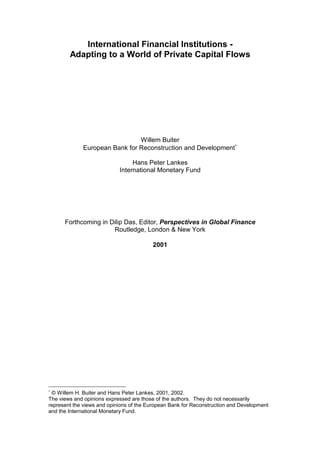The document discusses two main ways that international financial institutions can adapt to increasing private capital flows and a greater role of the private sector in development:
1. Help governments create conditions for market-oriented growth through macroeconomic stability, infrastructure development, and other reforms.
2. Become direct participants in private sector investment by partnering with private investors, complementing private finance rather than displacing it, and applying private sector approaches while still pursuing development goals. This would require new flexibility, expertise in assessing commercial risk, and adapting procedures. Partnering with IFIs could benefit private investors through the IFIs' development objectives and experience in recipient countries.














